The exhibition is located at the first floor of the building and during last years area increased. Indeed today there are new halls for temporary exhibitions and two new labs for didactic activities. A sensorial path has been organised so that even blind visitors are able to enjoy museum; many spaces in which to andle the naturalistic finds to explore the museum using senses.
At the entrance, a reconstructed adult Mammoth and a young specimen welcome visitors to the exhibition. This imposing installation can be considered emblematic of the educational role of scientific museums in providing information on – and inspiring in us respect for – our geographic and natural heritage, through research, conservation, study and teaching activities. During the years between 1905 and 1914, a number of fossilized remains of mammoths were discovered on the Petosino plain, just a few miles from Bergamo. Mammoths once roamed the area and were well suited to the extremely cold climatic conditions once prevailing here. The remains and specimens making up the museum’s collections, only partially displayed, provide us with insights into the types of changes which took place over time locally, and with the means to reconstruct the area’s past from the natural history angle.
On the wall to the right, we find panels dedicated to the origins of natural history museums in Europe and Italy.
A large panel on the wall to the left illustrates the history of this museum and the main stages in its development – from 1871, when the didactic collections of the Royal Technical Institute were opened to the public, to the present day. Archive photos illustrate the various premises used in the past, and document how the exhibition spaces have changed over the years.
The relief map in this room, on the left, which also includes braille comments, provides information on all the exhibition areas in the museum, including information on “the museum you can touch” installations, fitted with tactile exhibits for partially sighted or totally blind visitors.
The reception staff are at hand to provide visitors with information. Publications and merchandise are also available. A catering area, with seating and tables, is open to visitors, where they can also browse through natural science publications. The corridor immediately to the left, leading away from the entrance, takes us to the zoology exhibition area. The passage opening at the back leads to the geopaleontology rooms.
QR Codes Code allow you to hear the audio guides regarding the exhibitions downloaded directly on your smartphone thanks to navigation “Bergamo WiFi” service offered free of charge by the City of Bergamo.
Here you can listen to the tracks of audio guides that describe the exhibition of our museum!
{rokbox album=|myalbum| title=|Museo :: Ingresso|}images/stories/museo/ESPOSIZIONI/01_INTRO/pag_304.jpg{/rokbox}


